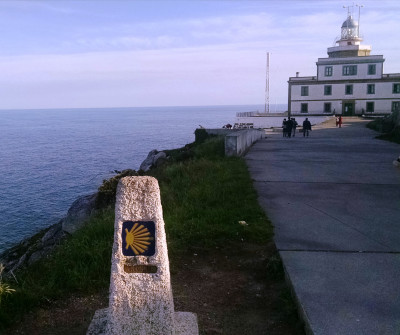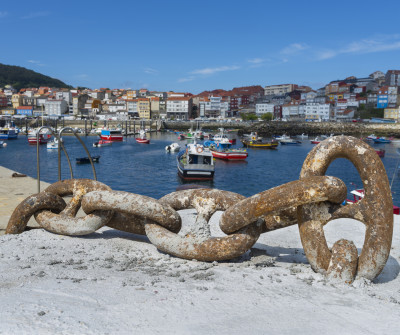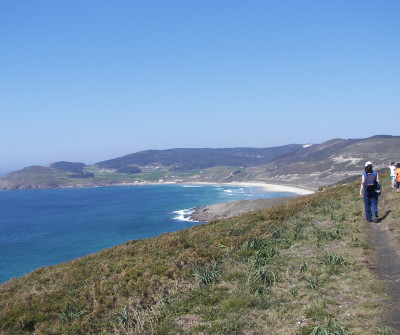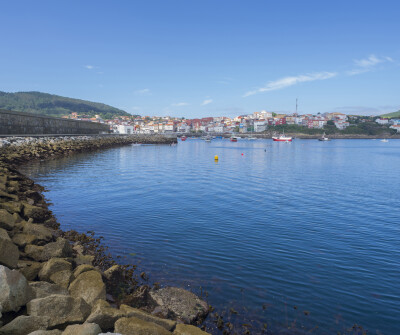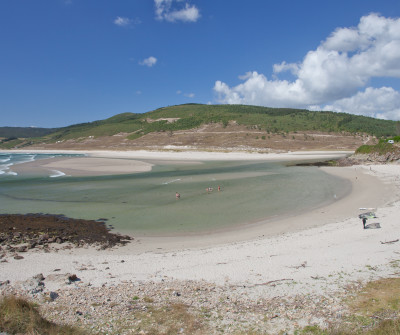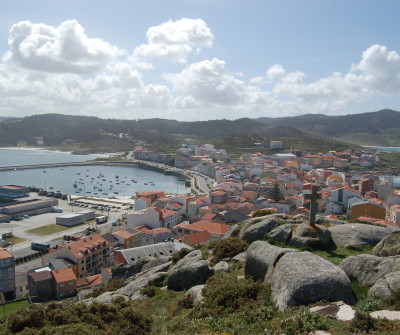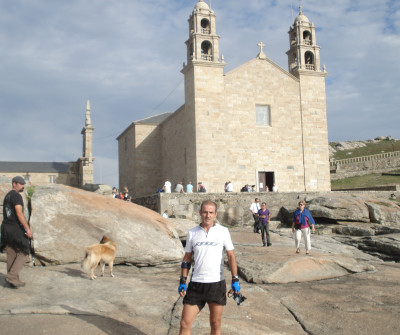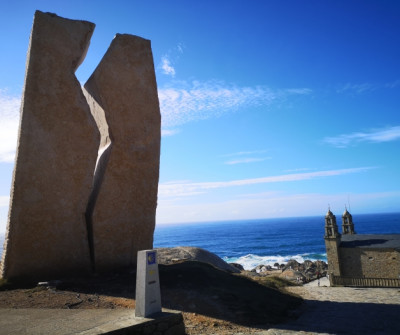1. Fisterra – Lires (14 km)
You leave Fisterra towards Praia de Langosteira, a place already familiar to pilgrims. By the hotel Arenal, you will find the Camino sign pointing towards the village of Duio, with its Baroque church. When you reach Hermedesuxo de Abaixo, you will find the traditional route towards the right, but if you go straight ahead along the tar road you will reach the Praia do Rostro.
If you follow the official route, you will reach Buxán, the middle of this section. The path continues along the municipality of Fisterra to Padrís, where you will meet those pilgrims who decided to take the detour towards O Rostro.
There is a light descent towards Lires, a village in the municipality of Cee with a beautiful beach and where you must stamp your Credencial if you want to spend the night at the public hostel of Muxía.
2. Lires – Muxía (17 km)
The river Castro is the first landmark in this section going up North. You have to cross it and go towards Frixe, already in the municipality of Muxía. You still have 5 kilometres to Morquintián, where you have to pay attention to the signs and follow the yellow arrows on the paving. The path goes up to Facho de Lourido and down to Xurarantes.
At this point, you have already left 10 kilometres behind, you continue around the beach of Lourido to enter Muxía, with the Shrine of the Virxe da Barca and the famous Pedra de Abalar.
Tips from our postmen and women
What to do and see in Lires?

“The most interesting thing about Lires is the beach. There are also many beehives and you can buy pure local honey here”.
What to do and see in Muxía?

"In Muxía proper, apart from the Shrine and church of Santa María, you need to go up to the viewpoint of O Corpiño and also visit the secadores of conger eel (the facilities where this fish used to be dried to be preserved), unique in Europe”.


 Filter
Filter